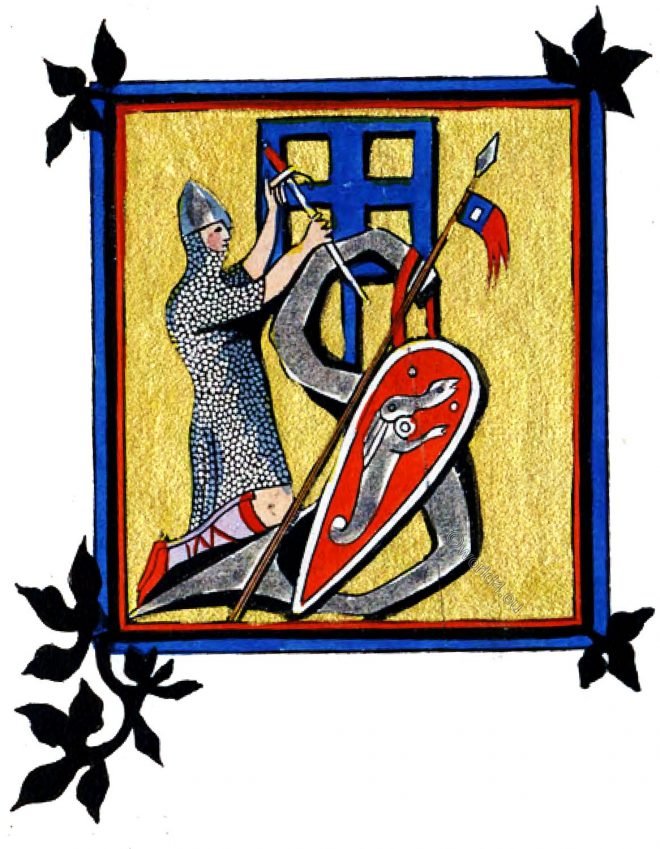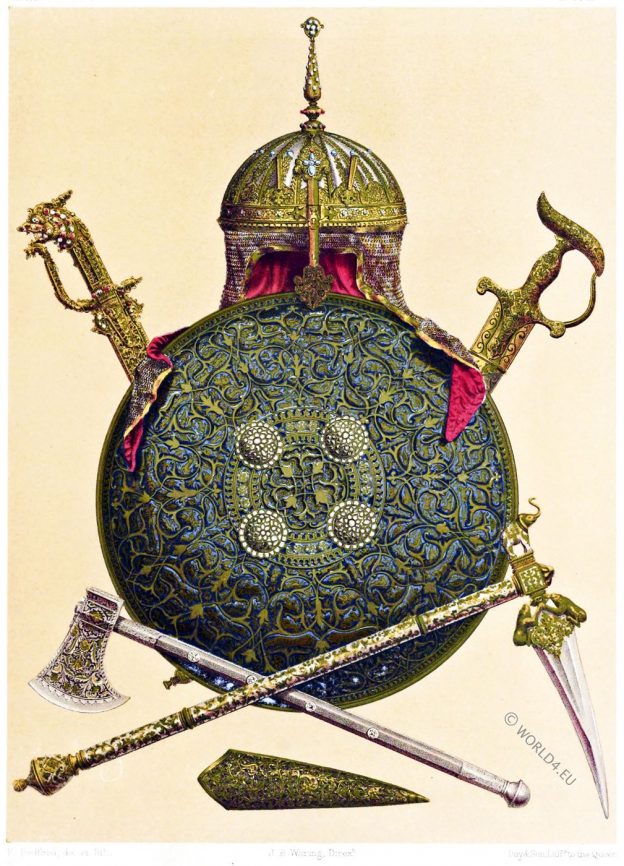The Norman conquest. William the Conqueror. 1066. The state of Armour in Britain when William led his army of Normans.
Category: Military
War costumes in the Middle Ages. Flags, banners, standards.
War costumes of the Middle ages. France 12th, 13th and 14th centuries. Weapons from the 12th to 15th centuries. Armor, weapons, flags, banners, standards.
Greek Military of Antiquity. Different types of Chariots and Armor.
War, race and triumphal chariots. Greek soldier. Leader in full armor. Different types of the Greek helmet and weapons.
Roman soldiers and gladiators. Function, armor and armament.
The legionnaires: The triarii, the impediti, the eques, the Centurio, the phaleratus, the military tribune – Caesar Imperator. – The signifer, the vexillarius. The gladiators: the mirmillo, hoplomachos, the retiarius.
Metallic Art. Weapons and armament from India, 17th c.
Mughal Empire. Indian Helmet, shield and swords.
The story of Catalina de Erauso, the fighting nun lieutenant.
THE story of Catalina de Erauso, the Spanish nun who became famous as a soldier
Assyrian Blouses and Ensembles. Costumes common to both sexes.
Babylonian gown. Tunic, blouses and ensembles. Costumes common to both sexes. The Luxurious Assyrian Costumes
Costumes of the Ottoman court. Cara Coulouktjou, Ousta, 1850.
The motifs show costumes of the Ottoman court during the reign of Mahmoud II. Elbicei Atika was the name of a costume museum in Constantinople, originally located in the armoury of the Seraglio.
Bach Tchohadar, Silihtar Aga, Peik, Solak.
Bach Tchohadar, Silihtar Aga, Peik, Solak. Ottoman Empire 1856. Various Ottoman functionaries and military personnel in their traditional costumes.
Honorable Artillery Company of London
Honorable Artillery Company of London










